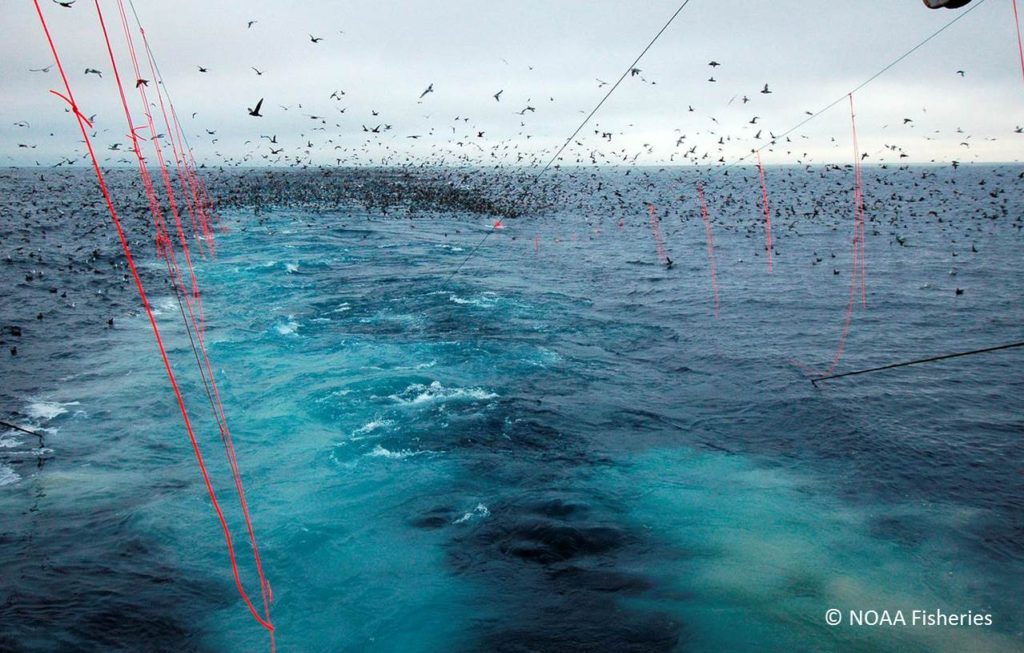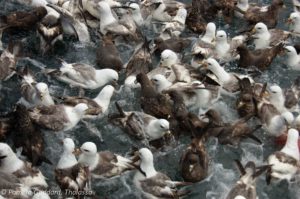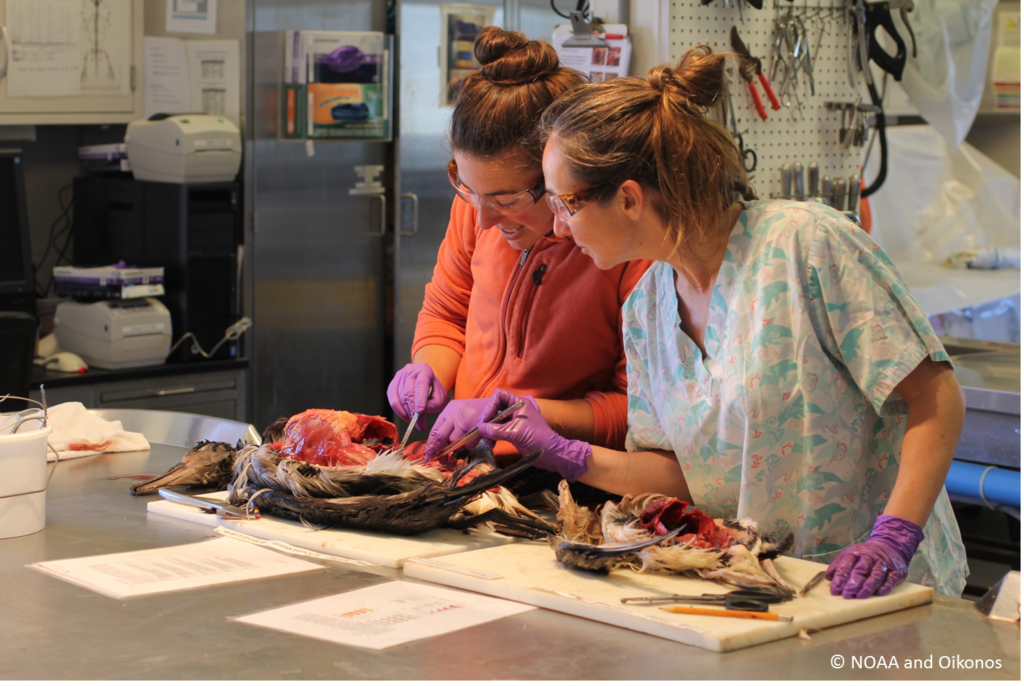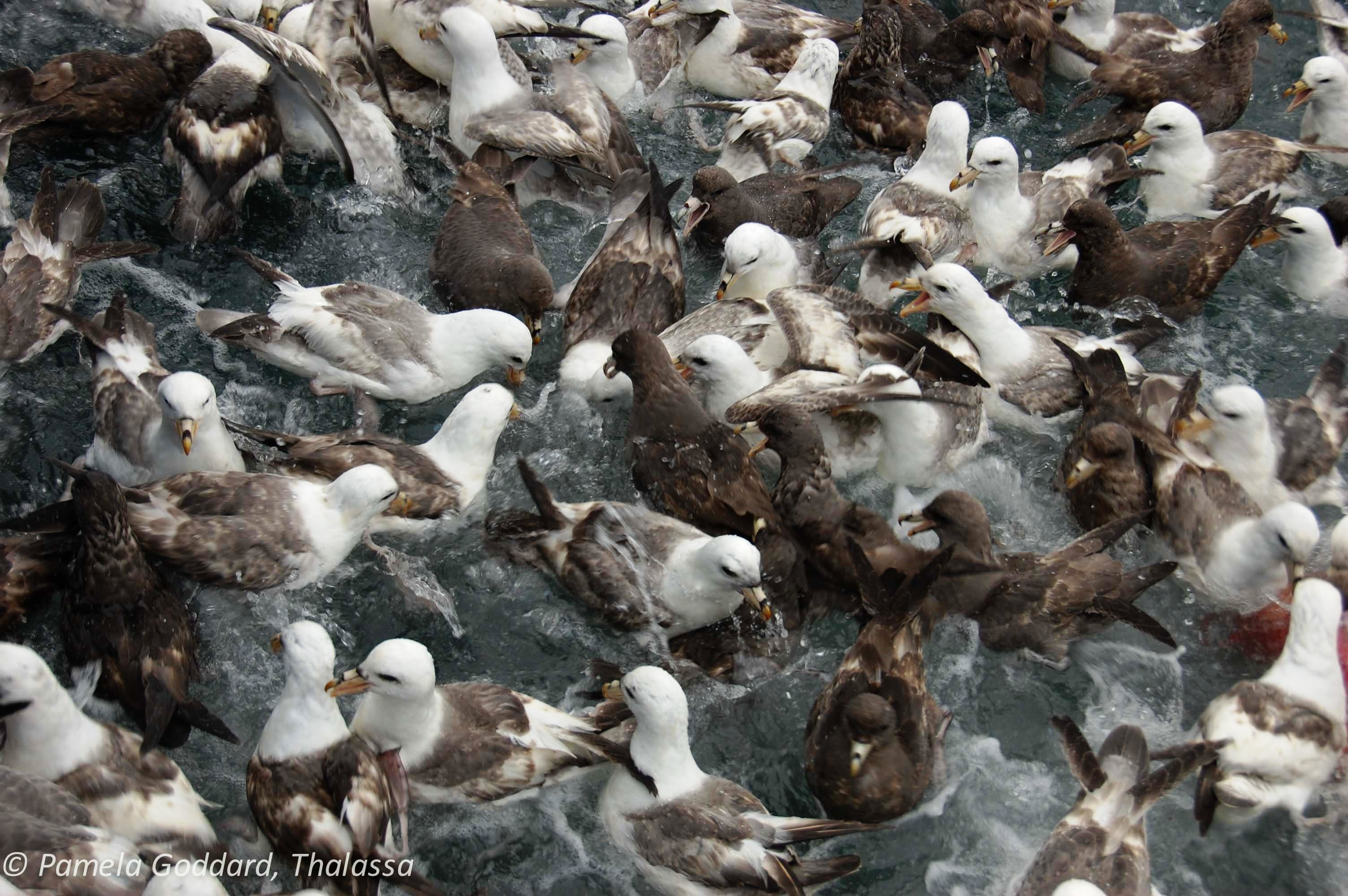Each spring and fall, the North Pacific groundfish and Pacific halibut boats ramp up for their peak seasons at sea. These fisheries catch a variety of fish species, such as cod, halibut, sablefish, and turbot. Around the Pribilof Islands (Alaska), many boats fish for Pacific cod that live along the shelf of the southeastern Bering Sea. When you add all the catch from these fisheries together, they make up the largest fishery region in the United States!
Like most fisheries, sometimes these boats catch animals they didn’t mean to catch – this is called bycatch. Bycatch can be fish species that are not the target fish – like sharks – or seabirds, marine mammals, and sea turtles. Even jellyfish can be bycatch! Many boats use special mitigation techniques to help them avoid bycatch, such as using hooks that are difficult for sea turtles to get caught on or adding red streamers to the back of longline boats to scare birds away from the area where the hooks are.
Can you see in the picture below how the birds are staying away from the area with the red streamers?

A longline boat uses red streamers to keep the seabirds away from the hooks
Even with mitigation techniques, it can be hard for fishers to avoid accidently catching bycatch. To help understand the impacts of bycatch, the federal government asks fishing vessels to carry people on fishing boats called observers. These observers collect data on many things, such as how many fish are being caught, what ages and sizes they are, and what type of animals are being caught as bycatch.
Northern Fulmars, one of the seabird species that breed on the Pribilof Islands, are the most-caught seabird species in these fisheries. Fulmars have an excellent sense of smell and are attracted to the bait on fishing hooks and the offal, little bits of discarded fish, which is tossed over the sides of fishing boats as they clean the fish. An estimated 1.5 million fulmars live in Alaska and an average of 4,110 caught annually between 2007 and 2017 in the groundfish and halibut fisheries.

Northern Fulmars are attracted to pieces of fish in the water around a fishing boat
To understand if catching fulmars as bycatch impacts their Alaskan population, observers on fishing vessels are instructed to save dead Northern Fulmars for scientists to study. Once the boats get to dock, the observers will transfer the birds to the Seabird Bycatch Necropsy Program, a collaboration between NOAA and the non-profit Oikonos. There, scientists will necropsy, or dissect, the birds to take samples, document age and sex, and look at what kind of food and how much plastics the birds are eating.

Jessie Beck and Veronica Lopez conduct necropsies on seabird bycatch
As part of project, Jessie Beck (above, in red) fills tiny vials with pieces of fulmar muscle for the Fulmar Genetics Project. She will send these vials off to Diana Baetscher and Carlos Garza, at the University of California Santa Cruz, to analyze the genetics of the birds as part of the Fulmar Genetics Project to see which islands they are coming from. More soon on results from their study!

